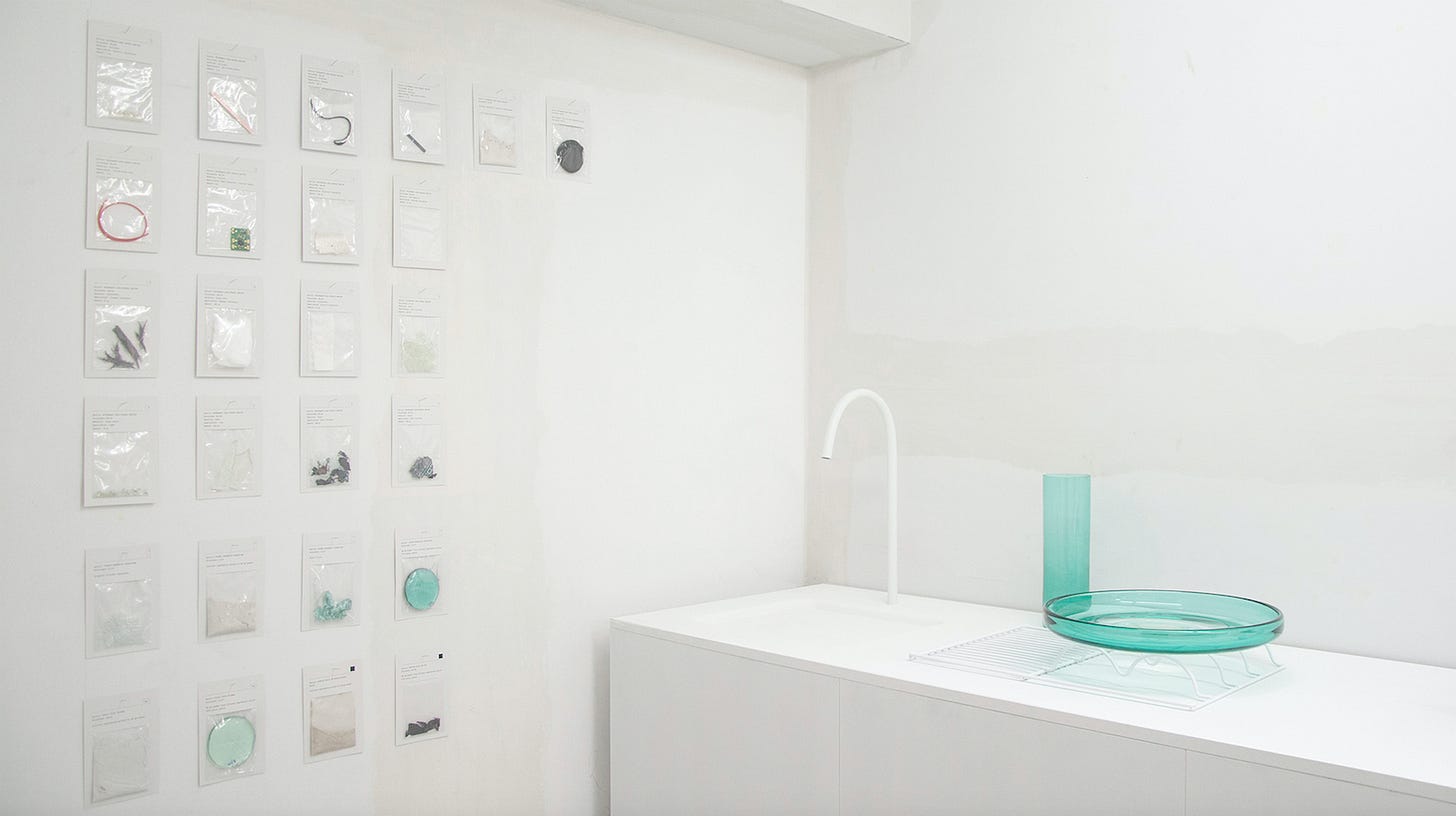'What once seemed utopian will soon seem obvious'
WASTED // DOMESTIC // Studio Plastique
WASTED//BROKEN//GROWN is where I am serialising my most recent two books Wasted: When Trash Becomes Treasure (Ludion, 2020 – now sold out in book form) and Broken: Mending & Repair in a Throwaway World (Ludion, 2023) and where I will be publishing the final book in the trilogy, Grown: Design That Gives Back, but only with your support. Subscribe and upgrade to paid to get all three books delivered to your inbox, chapter by chapter, and to support me in writing the third book.
After air and water, the most consumed resource on earth is sand – and we are starting to run out. How can something that seems so ubiquitous become so scarce? Well, there’s sand, and then there’s sand. Eroded by wind, desert sand is too smooth for most contemporary applications – for example, it won’t lock together to form concrete. The sand we need is the angular, water-eroded sand in riverbeds, lakes and along our coastlines. This SiO2 is processed into such things as concrete, glass, silicon, fibreglass, optical glass, quartz glass and glass wool. Growing demand for concrete (China has used more sand since 2010 than the United States used in the whole of the 20th century) is such that rivers, lakes and beaches are dredged, and farmland and forests uprooted, for the sand that lies beneath them. But because SiO2 is used for so many household appliances, there is another source of this precious material – landfill. Despite European directives dictating that electric and electronic equipment must be recycled, its component parts hold little value. This is something Theresa Bastek (1990, Aschersleben, Germany) and Archibald Godts (1990, Hasselt, Belgium) hope to change.
‘Sand powers everything from high tech (Silicon Valley) to low tech (concrete buildings and glass windows).’
Playing on the phrase ‘common sense,’ their Common Sands project was conceived to question the networks, systems and structures behind the production, consumption and disposal of household appliances. ‘It is outright stupid to neglect these waste materials,’ says Bastek. ‘It just makes sense to find applications for them.’ Common Sands transforms the glass found in domestic appliances such as fridges, washing machines and microwaves – often dumped when a minor fault renders them cheaper to replace than to repair – into elegant home accessories. ‘Glass is endlessly recyclable,’ says Godts. ‘And, in this case, its previous life gives it new and often beautiful colours, viscosities and workability.’ Proudly displaying these characteristics, each piece is branded with information about its source, bearing witness to its unique and complex heritage.
Keep reading with a 7-day free trial
Subscribe to Wasted // Broken // Grown to keep reading this post and get 7 days of free access to the full post archives.




